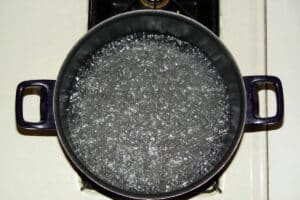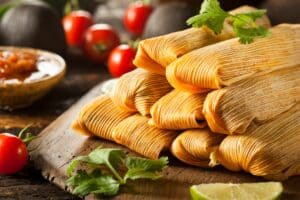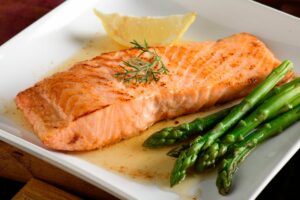Shrimp is a versatile and delicious seafood that you can cook in a variety of ways, from grilling and sautéing to boiling and baking.
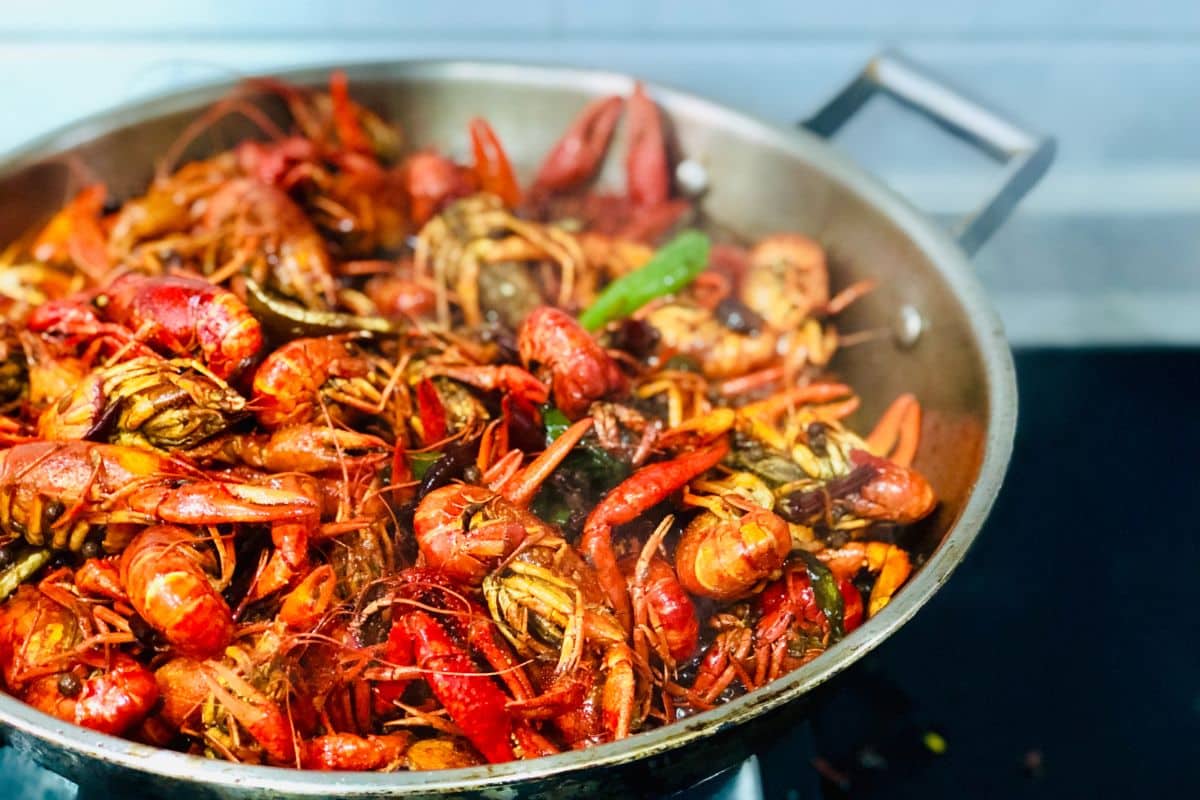
However, getting the perfect cook on shrimp can be a bit of a challenge. Undercooked shrimp can be unsafe to eat, while overcooked shrimp might become quite tough and rubbery.
If you’re not sure how to tell when shrimp is fully cooked, you’re not alone. Many home cooks struggle with this issue, and it’s easy to understand why.
Shrimp can be deceiving, as it often changes color as it cooks, making it hard to know when it’s done.
Fortunately, there are several simple ways to determine if shrimp is fully cooked. By using these techniques, you can ensure that the shrimp is perfectly cooked every time, no matter how you’re preparing it.
In this guide, we’ll explore the different ways to tell if shrimp is fully cooked, including visual cues, texture, and cooking times.
We’ll also share some tips for avoiding common mistakes and ensuring that the shrimp turns out tender, juicy, and flavorful. So whether you’re a seasoned pro or a novice cook, read on to learn how to master the art of cooking shrimp.
How To Cook Shrimp?
Shrimp may be cooked in a variety of different ways, depending on your preference and the recipe you’re using. Here are some common methods for cooking shrimp:
- Grilling: To grill shrimp, preheat your grill to medium to high temperature and lightly oil the grates.
Thread the shrimp on skewers (if desired) and brush them with a mixture of olive oil, minced garlic, and your favorite seasonings. Grill the shrimp for 2 to 3 minutes each side, until they’re slightly charred and pink in color.
- Sautéing: To sauté shrimp, heat a tablespoon of olive oil or butter in a large skillet over medium-high heat.
Add the shrimp and cook for 2 to 3 minutes each side, until they’re pink and slightly browned. Add minced garlic, chopped herbs, or other seasonings as desired.
- Boiling: To boil shrimp, bring a large pot of salted water to a boil. Add the shrimp and cook for 2-3 minutes, until they’re opaque and pink. Drain the shrimp and rinse them under cold water to stop the cooking process.
- Steaming: To steam shrimp, bring a pot of water to a boil and use a steamer basket. Add the shrimp to the basket and cover the pot. Steam the shrimp for 2-3 minutes, until they’re pink and slightly firm to the touch.
No matter which method you use, be sure to season the shrimp with salt, pepper, and other herbs or spices to enhance their flavor.
And remember to check for doneness using the methods outlined below to avoid undercooking or overcooking the shrimp. With a little practice, you can cook perfect shrimp every time!
How To Tell If Your Shrimp Is Fully Cooked?
There are several ways to tell if shrimp is fully cooked, and the method you choose may depend on how you’re preparing the shrimp.
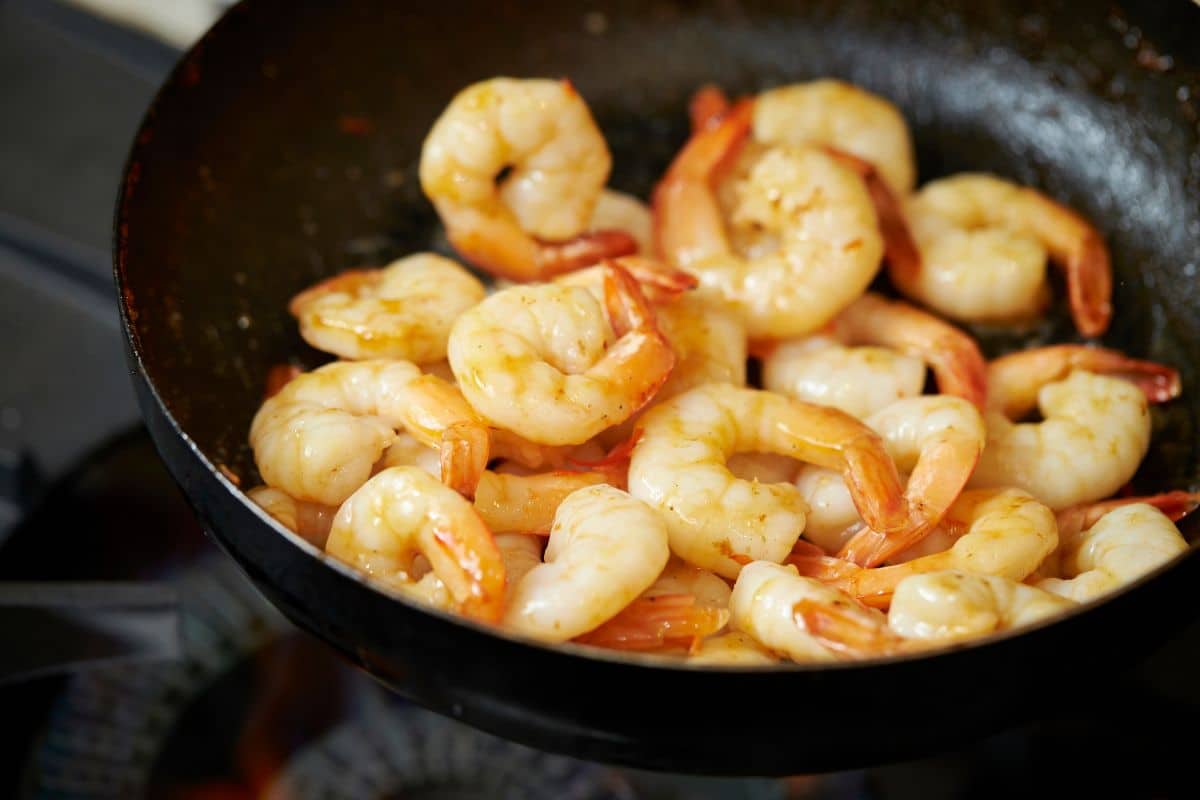
- Visual cues: One of the easiest ways to tell if shrimp is fully cooked is to look at its color. Raw shrimp is gray or translucent, but cooked shrimp turns pink or white.
If the shrimp is gray or translucent, it needs more time to cook. If it’s turned completely pink or white, it’s likely overcooked.
- Texture: Cooked shrimp is firm and slightly springy, but not rubbery. If the shrimp feels mushy or slimy, it’s likely undercooked. If it’s tough or chewy, it’s likely overcooked.
- Cooking time: The cooking time for shrimp can vary depending on the cooking method and the size. As a general rule, shrimp ought to be cooked for 2 to 3 minutes each side if you’re grilling or sautéing, or 3-4 minutes if you’re boiling or steaming.
- Internal temperature: If you have a meat thermometer, you can use it to check the internal temperature of the shrimp. Cooked shrimp should reach a minimum internal temperature of 145°F (63°C).
No matter which method you use to check for doneness, it’s important to not overcook your shrimp, as this can cause it to become rubbery and tough.
With a little practice and attention to detail, you can master the art of cooking shrimp and enjoy perfectly cooked, delicious seafood every time.
Dangers Of Undercooked Shrimp
Undercooked or raw shrimp can pose several health risks, as it could harbor viruses and bacteria. Some of the most common dangers of undercooked shrimp include:
- Food poisoning: Shrimp can be a source of various food borne illnesses, such as Vibrio, Salmonella, and E. coli.
- Parasites: Raw or undercooked shrimp might contain parasites, such as Anisakis or Toxoplasma. These parasites can cause severe stomach pain, diarrhea, and other gastrointestinal symptoms.
- Allergic reactions: Some people may be allergic to shrimp or shellfish, and eating undercooked shrimp can trigger an allergic reaction. Symptoms may include hives, itching, swelling, and difficulty breathing.
To avoid these dangers, it’s important to cook shrimp thoroughly to an internal temperature of 145°F (63°C). If you’re not sure whether the shrimp is fully cooked, check for visual cues such as its color, texture, and cooking time.
Tips For Avoiding Common Mistakes
Cooking shrimp can be tricky, but by avoiding these common mistakes, you can ensure that the shrimp turns out perfectly every time:
- Overcooking the shrimp: Overcooked shrimp might become quite tough and rubbery. Be sure to keep an eye on the shrimp and cook them only until they’re pink and slightly firm to the touch.
Remember that shrimp continue to cook after they’re removed from the heat, so be sure to move them from the heat a little early and let them finish cooking off the heat.
- Not removing the shell: If you’re grilling or sautéing shrimp, be sure to remove the shell before cooking. Leaving the shell on can result in tough, chewy shrimp, and it can also prevent the seasoning from penetrating the meat.
- Not deveining the shrimp: Deveining the shrimp, or removing the digestive tract, can improve the flavor and appearance of the shrimp.
To devein shrimp, use a small sharp knife to make a shallow cut along the back of the shrimp and remove the black or gray vein with the tip of the knife or your fingers.
- Not seasoning the shrimp: Shrimp can be bland on their own, so be sure to season them with salt, pepper, and other herbs or spices to enhance their flavor.
You can also marinate the shrimp in a mixture of olive oil, lemon juice, garlic, and herbs before cooking.
- Using old or frozen shrimp: Fresh shrimp is always best, but if you’re using frozen shrimp, be sure to thaw them properly before cooking.
Do not use shrimp that has been frozen and thawed more than once, as this can cause the texture to become mushy and the flavor to deteriorate.
By avoiding these common mistakes and following the tips outlined in the previous answers, you can cook perfectly delicious shrimp every time.
What To Serve With Shrimp?
Shrimp is a versatile and delicious protein that can be served in many different ways. Depending on the recipe and preparation method, there are many side dishes that can complement and enhance the flavors of shrimp.
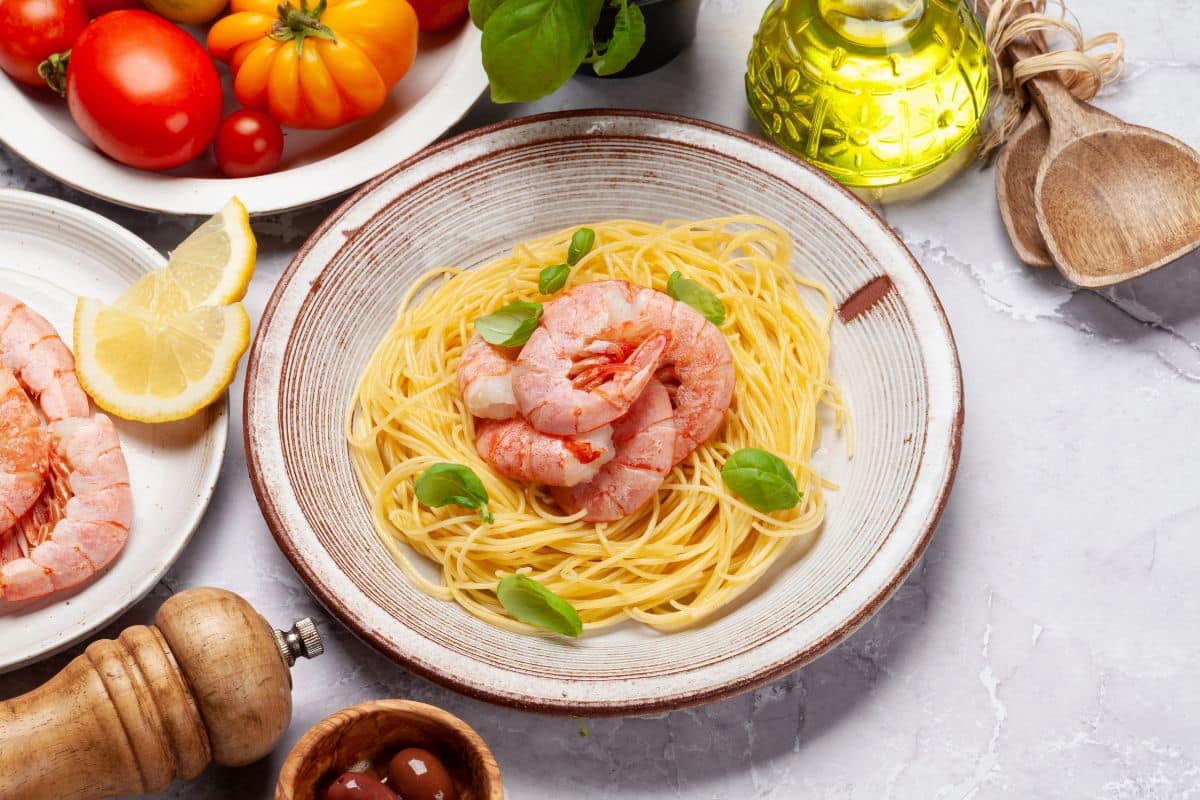
Here are some ideas for what to serve with shrimp:
- Rice: Shrimp and rice are a classic combination, and rice can be prepared in many different ways, such as plain steamed rice, fried rice, or pilaf.
- Vegetables: Roasted or grilled vegetables can add color and texture to shrimp dishes.
- Salad: A light and refreshing salad can balance the richness of shrimp, such as a citrusy salad with mixed greens, avocado, and grapefruit.
- Pasta: Shrimp pasta dishes, such as shrimp scampi or shrimp Alfredo, are popular and satisfying meals.
- Bread: Crusty bread or garlic bread can be a simple and delicious way to enjoy flavorful sauces or juices from the shrimp.
- Soups or stews: Shrimp may be added to soups or stews, such as gumbo or cioppino, for a hearty and satisfying meal.
- Fruit: Fresh or grilled fruit, such as pineapple, mango, or peaches, can add a sweet and tangy contrast to spicy or savory shrimp dishes.
These are just a few examples of what to serve with shrimp, but there are many other options depending on your taste and preferences. Experiment with different flavors and textures to enjoy a well-balanced and satisfying meal.
Final Thoughts
Cooking shrimp can be a quick and easy way to prepare a delicious and nutritious meal. However, it’s important to cook shrimp properly to ensure food safety and avoid common mistakes such as undercooking or overcooking.
By following the tips and guidelines mentioned above, you can cook shrimp that is juicy, tender, and packed with flavor.


